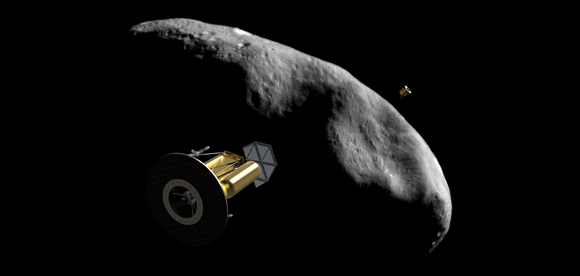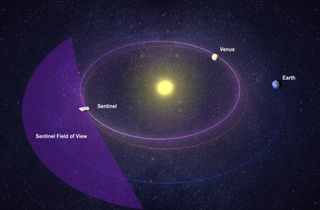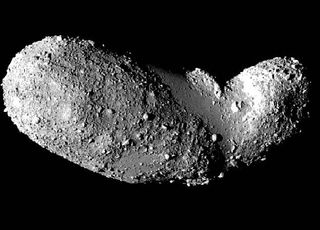
The main goal of a newly announced private space telescope may be protecting Earth, but the instrument could also help out prospective asteroid miners, its builders say.
The nonprofit B612 Foundation's Sentinel space telescope should discover 500,000 near-Earth asteroids within 5 1/2 years of its planned 2017 or 2018 launch, B612 officials say. Some of those space rocks may pose a threat to our planet down the road, while others might be good targets for resource extraction.
Sentinel's mapping campaign could make things easier for asteroid-mining firms like the billionaire-backed Planetary Resources, allowing them to focus on characterizing — rather than discovering — promising space rocks.
"We will provide the accurate orbit determinations so that you know where to point your other telescopes," former astronaut Ed Lu, B612's chairman and CEO, told reporters at Sentinel's official unveiling on June 28. "We will get a handle on the sizes of the asteroids, which is critical."[Photos: The Sentinel Space Telescope]

A wealth of asteroids
Scientists have discovered roughly 10,000 near-Earth asteroids to date. Sentinel, which will scan Earth's neighborhood from an orbit near that of Venus, should surpass that total in its first few weeks of operation, B612 officials said.
"When Sentinel is done, it will have catalogued roughly half a million asteroids," Lu said. "It will be the definitive map of the inner solar system."
Get the Space.com Newsletter
Breaking space news, the latest updates on rocket launches, skywatching events and more!
The 3,300-pound (1,500-kilogram) telescope will look in infrared light, in which asteroids show up as warm, moving blobs against the cold backdrop of space.
The B612 Foundation hopes Sentinel flags any potentially dangerous asteroids several decades before they may strike Earth, giving humanity plenty of time to mount a deflection mission if need be. Such a mission could nudge the asteroid into a benign orbit using a fly-along "gravity tractor" probe, or knock it off course with a kinetic impact or nuclear blast.

Opening up the solar system
Sentinel's makers also hope the instrument's mapping efforts aid scientists interested in studying and exploring near-Earth asteroids, and help entrepreneurs who want to mine them for such resources as platinum-group metals and water.
"You can't do any of that if you don't know where they are," Lu told SPACE.com.
The telescope should provide relatively accurate size estimates for the space rocks it discovers, Lu added. But Sentinel is not equipped to determine the makeup of asteroids that could be mining targets; such work would require follow-up observations by companies such as Planetary Resources (which is not affiliated with B612 or with Sentinel).
"We're primarily an astrometric mission. That is, we're mapping something," said B612 chairman emeritus Rusty Schweickart, who was the lunar module pilot on NASA's Apollo 9 mission. "We're not doing the kind of detailed spectrographic work that would be required for actual resource exploitation."
Asteroid mining and exploration could help humanity finally gain a firm foothold beyond its home planet, and Lu hopes Sentinel plays a part in making that happen.
"These are stepping stones," Lu said of near-Earth asteroids. "Enabling the exploration of the solar system is essentially what we're trying to do."
Follow SPACE.com senior writer Mike Wall on Twitter@michaeldwall or SPACE.com @Spacedotcom. We're also onFacebook and Google+.
Join our Space Forums to keep talking space on the latest missions, night sky and more! And if you have a news tip, correction or comment, let us know at: community@space.com.

Michael Wall is a Senior Space Writer with Space.com and joined the team in 2010. He primarily covers exoplanets, spaceflight and military space, but has been known to dabble in the space art beat. His book about the search for alien life, "Out There," was published on Nov. 13, 2018. Before becoming a science writer, Michael worked as a herpetologist and wildlife biologist. He has a Ph.D. in evolutionary biology from the University of Sydney, Australia, a bachelor's degree from the University of Arizona, and a graduate certificate in science writing from the University of California, Santa Cruz. To find out what his latest project is, you can follow Michael on Twitter.